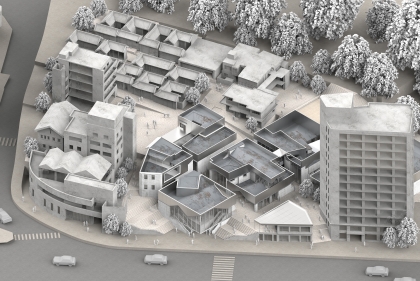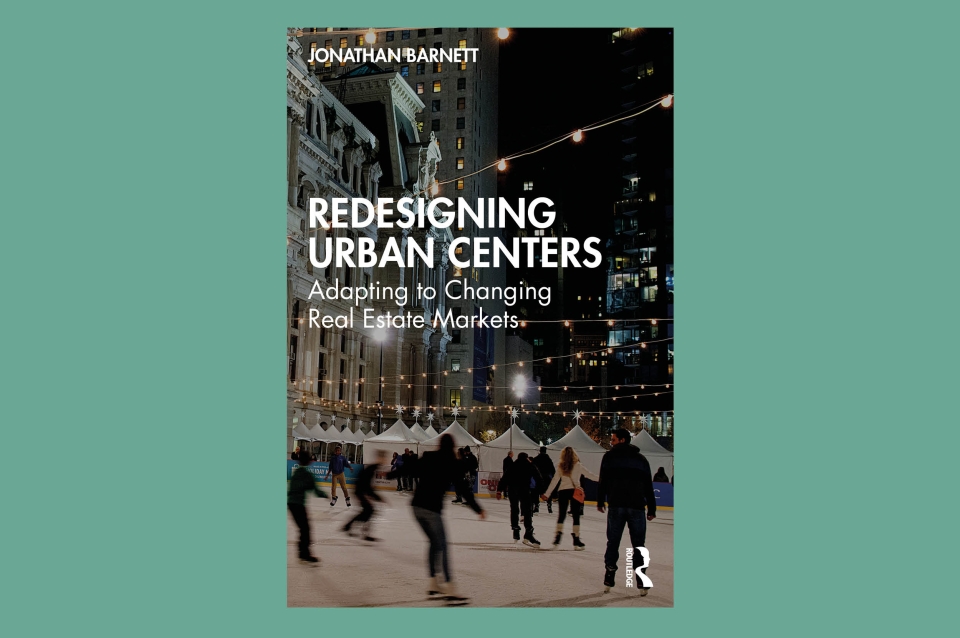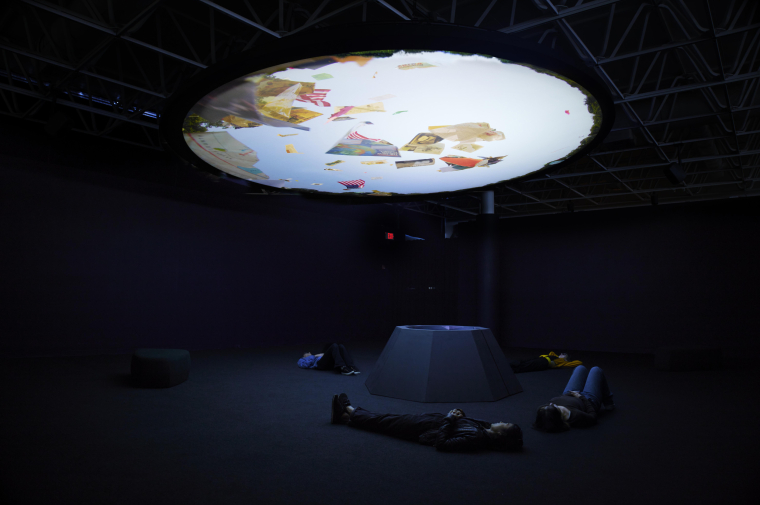October 15, 2025
Stuart Weitzman School of Design
102 Meyerson Hall
210 South 34th Street
Philadelphia, PA 19104
Get the latest Weitzman news in your Inbox
Media Contact
Michael Grant
mrgrant@design.upenn.edu
215.898.2539
A new book from Routledge, Redesigning Urban Centers: Adapting to Changing Real Estate Markets, by Professor of Practice Emeritus of City & Regional Planning Jonathan Barnett, describes how well‑managed places which offer clean, safe, and attractively designed streets and public spaces, along with reinvented zoning, are drawing real estate investors and developers to reimagined legacy downtowns, innovation districts, edge cities, suburban shopping streets, urban districts near airports, and bypassed downtowns. In an excerpt, Barnett discusses the many ways that new technologies are changing our urban centers.
The urban frontier is closing. Turning rural land into urban land used to be one of the most reliable ways to make money in real estate. Today there are fewer places where urbanizing rural land continues to be profitable, as the edge of one metropolitan region meets another and development consolidates into megaregions. The demand for urbanizing land also seems to have stabilized around 2010 at about one-quarter of its peak in the late 1990s, partly as the result of rising gasoline prices.
Instead, developers began seeing opportunities in disused industrial sites, failing office parks, and empty shopping malls, as well as the vacant blocks and buildings in older urban centers, all places with good access and necessary utilities in place. Redesigning older urban centers and adding a variety of new activities to earlier suburban development is an important part of a new generation of real estate investment.
Six new kinds of urban centers are emerging in metropolitan regions across the United States and Canada. They include legacy downtowns reimagined to meet their suburban competition; innovation districts growing up around universities and hospitals; the edge cities at major highway junctions which are working to integrate their separate shopping centers, office parks, and apartments; suburban shopping streets growing into mixed-use centers; airport districts for freight logistics, hotels, and offices; and bypassed downtowns left behind by current real-estate trends and now relying on government support to reinvent their economies.
New Technologies Are Changing Urban Centers
Ordering online, working from home, genetic-based medical research, artificial intelligence, and driverless vehicles are all part of the forces changing urban centers.
E‑commerce and working from home are changing the space requirements for retailing: Shopping malls, downtown store fronts, main-street stores, and shops along suburban highways are all being transformed by new retail trends, leading to big changes in urban centers across metropolitan regions.
Retail and restaurants in legacy downtowns are recovering from their post-pandemic losses. They still benefit from being at the center of a large trading area and can sustain chain stores which also rent space in malls. Buying a phone or a computer benefits from interaction with the seller and is another activity that works well downtown. Recently some e-commerce brands have been opening “clicks to bricks” stores in malls and urban centers. Downtown retail and restaurants also benefit from being near attractions that draw from a large area: concert halls, theaters, museums, and other cultural activities, ballparks, arenas and stadiums, hotels, and convention centers. However, shops, restaurants, and take-out places whose primary business has been offering services to office workers can still be in trouble, leaving vacant storefronts in the office districts of legacy downtowns. Currently, the older urban centers which are recovering best from the dislocations of new technologies have a diverse group of attractions and strong neighborhoods nearby.
Main-street retail in suburbs and neighborhoods has never depended on office workers, and, where there are substantial numbers of well-off consumers living close by, has evolved to compete with online shopping. They now have concentrations of owner-operated restaurants, and local shops with carefully selected merchandise which build strong connections with customers – like bookstores, musical instrument stores, and specialty grocers – plus other activities where people must show up in person, like a hairdresser, or a spa – or at least go there sometimes, like a bank.
Large numbers of retail buildings along suburban highways are vacant and their parking empty, casualties of the e-commerce revolution and of developers building more retail space than the market could support. Strip shopping centers anchored by grocery stores do better than strip shopping anchored by now-closed K-Marts or other big-box stores. Drivers on these suburban highways often pass empty sites where vacant buildings became a liability, and the owners decided to tear them down. The most likely reuse for these vacant properties will be apartments and townhouses, which will reinforce the remaining retail and provide more housing alternatives.
Another significant part of the e-commerce trend has been new demands for locating distribution centers in suburbs, and for changes to streets and sidewalks in urban centers to make deliveries easier.
What is the new normal for working in an office? Working via email within a network of separate offices, freelancers, and out-sourced functions had become normal in some businesses, like publishing, well before the pandemic began in 2020 and suddenly made it a temporary necessity for everyone.
There are now two opposing trends in office work. One, especially characteristic of high-tech businesses, has been to try to keep people in their offices for as much of the day as possible by offering them food and other services, diverse ways to take a break, and a variety of interesting places to work and meet. The pandemic accelerated the counter trend where people can work and communicate with the office from home using email and conferring on platforms like Teams or Zoom. Once someone is working from home, with only occasional trips to the office, home can be farther away.
Businesses and governments are pushing their employees to return to the office at least three days a week, and some are demanding full attendance. Office designs are changing to offer more comfortable and attractive surroundings, plus the kinds of amenities provided by tech companies. The day of the factory-like office with large open floors filled with cubicles may be over. Currently, offices are close to full midweek, less so on Mondays, and Friday is the day that many people are still not coming in at all.
There continue to be shared office spaces available for rent to individuals and small enterprises, providing a congenial atmosphere and not just a desk and access to a conference room. People are willing to pay to work in such buildings, money they could save if they just operated from home. There must be something about an office experience which has positive values, even for those who work independently.
Read more from this chapter, on the Routledge website.


 Expand Image
Expand Image



